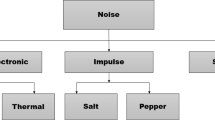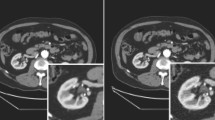Abstract
The constant development and the wider usage of computed tomography (CT) has gained the attention of researchers during medical practice related to radiation dose. The intention to eradicate the dosage causes increased artefacts and noise influences the confidentiality of the radiologist. Specifically, various noises like speckle, pepper, impulse, salt and Gaussian noise are determined as the complex source of image noise. Therefore, the enhancements in image reconstruction from the CT image need to be enhanced with the diagnostic performance are a challenging issue related to ill-posed nature. Various CT prediction approaches have given superior outcomes. Moreover, there are fewer works in image denoising using learning approaches as these approaches pretend to reduce mean square error (MSE) among the denoised CT images. The outcomes of the models are compromising and show the visibility of aggressive denoising. This research focuses on modelling an efficient approach for CT image denoising with an adaptive adversarial network model that uses weighted similarity measure (\(\mathrm{aa}-\mathrm{WSM}\)). The anticipated model has the key concept of enhancing the performance and reducing the error rate. The proposed model concentrates on migrating the noise distribution and learning the visual perception knowledge to perform the denoising task. The PSNR of the proposed model is 16.6 and SSIM is 0.64 which is comparatively better than existing methods. The suppressed noise is 5.2, artefacts reduction is 3.6 and the overall quality is 3.8 which is nominal than others. The model handles the essential information and manages the error rate with promising outcomes.







Similar content being viewed by others
Data availability
Enquiries about data availability should be directed to the authors.
References
Cadena C, Dick A, Reid ID (2016) ‘‘Multi-modal auto-encoders as joint estimators for robotics scene understanding,’’ in Proc. 12th Robot. Sci. Syst. pp. 1–9
Che Z, Purushotham S, Cho K, Sontag D, Liu Y (2018) ‘Recurrent neural networks for multivariate time series with missing values.’ Sci Rep 8(1):6085
Chen H et al (2017) Low-dose CT with a residual encoder-decoder convolutional neural network. IEEE Trans Image Process 36(12):2524–2535
Chung K, Kim J (2019) ‘Activity-based nutrition management model for healthcare using similar group analysis.’ Technol Health Care 27(5):473–485
Cui XY, Gui Z-G, Zhang Q, Shangguan H, Wang A-H (2016) ‘Learning-based artefact removal via image decomposition for low-dose CT image processing. IEEE Trans Nucl Sci 63(3):1860–1873
Dong C, Loy CC, He K, Tang X (2016) Image super-resolution using deep convolutional networks. IEEE Trans Pattern Anal Mach Intell 38(2):295–307
Gu S, Xie Q, Meng D, Zuo W, Feng X, Zhang L (2017) Weighted nuclear norm minimization and its applications to low-level vision. Int J Comput Vis 121(2):183–208
Jung H, Chung K (2016) ‘Knowledge-based dietary nutrition recommendation for obese management.’ Inf Technol Manag 17(1):29–42
Kang E, Min J, Ye JC (2016) “A deep convolutional neural network using directional wavelets for low-dose X-ray CT reconstruction.” [Online]. Available: https://arxiv.org/abs/1610.09736
Kim JC, Chung K (2019) ‘Mining based time-series sleeping pattern analysis for life big-data.’ Wireless Pers Commun 105(2):475–489
Kim JC, Chung K (2019) ‘Prediction model of user physical activity using data characteristics-based long short-term memory recurrent neural networks.’ KSII Trans Internet Inf Syst 13(4):2060–2077
Kim JC, Chung K (2020) ‘Neural-network based adaptive context prediction model for ambient intelligence.’ J Ambient Intell Humanized Comput 11(4):1451–1458
Ledig et al. (2016) Photo-realistic single image super-resolution using a generative adversarial network. [Online]. Available: https://arxiv.org/abs/1609.04802
Liu Y, Shangguan H, Zhang Q, Zhu H, Shu H, Gui Z (2015) ‘Median prior constrained TV algorithm for sparse view low-dose CT reconstruction.’ Comput Biol Med 60:117–131
Liu J et al (2018) ‘3D feature constrained reconstruction for low-dose CT imaging.’ IEEE Trans Circuits Syst Video Technol 28(5):1232–1247
Luo X, Zhou M, Li S, Shang M (2018) ‘An inherently nonnegative latent factor model for high-dimensional and sparse matrices from industrial applications.’ IEEE Trans Ind Informat 14(5):2011–2022
Nasrollahi A, Deng W, Ma Z, Rizzo P (2018) Multi-modal structural health monitoring based on active and passive sensing. Struct Health Monitor 17(2):395–409
Nie D, Trullo R, Petitjean C, Ruan S, Shen D (2016) “Medical image synthesis with context-aware generative adversarial networks.” [Online]. Available: https://arxiv.org/abs/1612.05362
Shang M, Luo X, Liu Z, Chen J, Yuan Y, Zhou M (2019) ‘Randomized latent factor model for high-dimensional and sparse matrices from industrial applications.’ IEEE/CAA J Automatica Sinica 6(1):131–141
Simonyan K, Zisserman A (2014) “Very deep convolutional networks for large-scale image recognition.” [Online]. Available: https://arxiv.org/abs/1409.1556
Srinivas S, Sarvadevabhatla RK, Mopuri KR, Prabhu N, Kruthiventi SS, Babu RV (2016) A taxonomy of deep convolutional neural nets for computer vision. Front Robot AI 2:36
Wang Y, Shao Y, Gui Z, Zhang Q, Yao L, Liu Y (2016) ‘A novel fractional-order differentiation model for low-dose CT image processing.’ IEEE Access 4:8487–8499
Wang G, Kalra M, Orton CG (2017) Machine learning will transform radiology significantly within the next 5 years. Med Phys 44(6):2041–2044
Wolterink JM, Leiner T, Viergever MA, Isgum I (2017) Generative adversarial networks for noise reduction in low-dose CT. IEEE Trans Med Imag 36(12):2536–2545
Wu Z, Wang Q, Jin J, Shen Y (2017) Structure tensor total variation regularized weighted nuclear norm minimization for hyperspectral image mixed denoising’. Signal Process 131:202–219
Xia Y, Gao Q, Cheng N, Lu Y, Zhang D, Ye Q (2017) ‘Denoising 3-D magnitude magnetic resonance images based on weighted nuclear norm minimization.’ Biomed Signal Process Control 34:183–194
Xu W, Mueller K (2009) A performance-driven study of regularization methods for GPU-accelerated iterative CT,’’ in Proc. Workshop High Perform. Image Reconstruct. (HPIR) pp. 20–23
Yang et al. (2017) ‘‘Low-dose CT image post-processing based on residual convolutional network,’’ IEEE Access, pp. 24698–24705
Zhang Y, Mou X, Wang G, Yu H (2017) Tensor-based dictionary learning for spectral CT reconstruction. IEEE Trans Med Imag 36(1):142–154
Zhu J-Y, Krähenbühl P, Shechtman E, Efros AA (2016) “Generative visual manipulation on the natural image manifold,” Proc. Eur. Conf. Comput. Vis. pp. 597–613
Funding
The authors have not disclosed any funding.
Author information
Authors and Affiliations
Corresponding author
Ethics declarations
Conflict of interest
Conflict of interest is not applicable in this work.
Ethical approval and consent to participate
No participation of humans takes place in this implementation process.
Human and animal rights
No violation of Human and Animal Rights is involved.
Additional information
Publisher's Note
Springer Nature remains neutral with regard to jurisdictional claims in published maps and institutional affiliations.
Rights and permissions
Springer Nature or its licensor (e.g. a society or other partner) holds exclusive rights to this article under a publishing agreement with the author(s) or other rightsholder(s); author self-archiving of the accepted manuscript version of this article is solely governed by the terms of such publishing agreement and applicable law.
About this article
Cite this article
Karthikram, A., Saravanan, M. An adaptive network model-based weighted similarity measure for CT image denoising. Soft Comput 28, 627–640 (2024). https://doi.org/10.1007/s00500-023-09399-9
Accepted:
Published:
Issue Date:
DOI: https://doi.org/10.1007/s00500-023-09399-9




